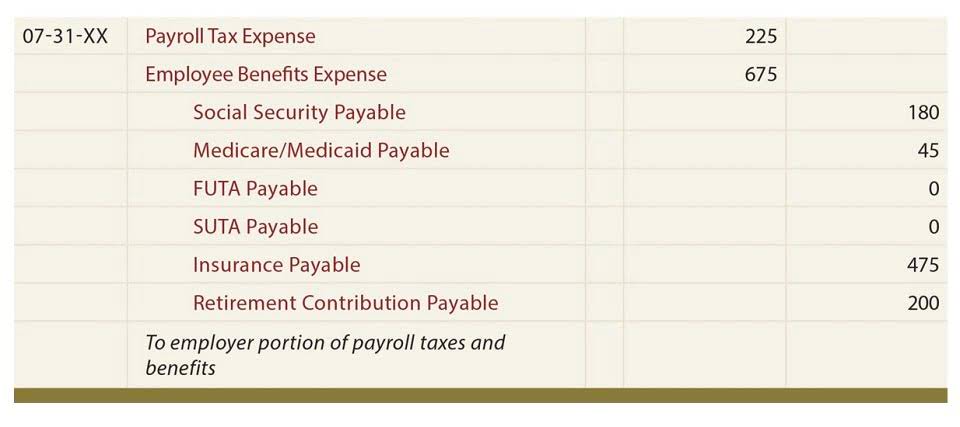
For a sample training presentation for supervisors and other individuals who manage nonexempt employees, see FLSA Training for Supervisors Part V. The following methods offer exceptions to the normal FLSA overtime pay requirements. Employers are not required to include holiday and vacation pay in their calculation of the regular rate when no work is performed due to the vacation or holiday. As a general rule, activities that employees engage in before or after their regular workday that are not part of their principal duties are not compensable under the FLSA. Examples of noncompensable activities are waiting in line to punch a time clock, changing clothes or washing up for the employees’ convenience, and waiting in line for paychecks.
At what pay rate is overtime paid?
Under federal law, to calculate a nonexempt employee’s regular rate of pay, divide the weekly salary by the total number of hours worked. Calculating overtime pay is usually easiest with hourly employees who have a single rate of pay and no additional compensation. Following FLSA rules, multiply the regular rate of pay by 1.5 and multiply the result by the total number of overtime hours worked. Sometimes, a pieceworker is hired on a piece-rate basis with a minimum hourly guarantee.
- Employers and employees must agree in writing to lieu time rather than overtime pay.
- Employers are not required to include holiday and vacation pay in their calculation of the regular rate when no work is performed due to the vacation or holiday.
- HR professionals need to be able to communicate the reasons why the law says what it says.
- Discover practical strategies for optimizing overtime use to balance workload, cost, and employee welfare effectively.
- States with daily overtime include Alaska, California, Colorado and Nevada.
- Information made available on this website in any form is for information purposes only.
- ► From Fast Company — During his first term, Trump cut overtime pay for millions of people.
Non-discretionary bonuses and commission payments

Every covered employer must keep detailed records for each nonexempt worker regarding hours worked and wages paid. Payroll records must be maintained for at least three years, and records on which wage computations are based, such as timecards, must be retained for two years. Some states have their own employment and overtime laws, while others follow the FLSA.
Overtime rules by state vs. federal overtime law

And on Jan. 1, 2025, most salaried workers who make less than $1,128 per week will become eligible for overtime pay. As these changes occur, job duties will continue to determine overtime exemption status for most salaried employees. Earnings may be determined on a piece-rate, salary, commission, https://www.bookstime.com/ or some other basis, but in all such cases the overtime pay due must be computed on the basis of the average hourly rate derived from such earnings. This is calculated by dividing the total pay for employment (except for the statutory exclusions noted above) in any workweek by the total number of hours actually worked. An employee’s workweek is a fixed and regularly recurring period of 168 hours — seven consecutive 24-hour periods.

- If an employer wants to use a basic rate other than one of the authorized rates set forth in 29 C.F.R. §548.3, prior approval is required from the DOL.
- Effective July 1, 2024, the salary threshold will increase to the equivalent of an annual salary of $43,888 and increase to $58,656 on Jan. 1, 2025.
- In cases where an employee is subject to both the state and federal overtime laws, the employee is entitled to overtime according to the higher standard (i.e., the standard that will provide the higher overtime pay).
- Employees receiving remedial education are provided an overtime exemption for spending up to 10 hours in any workweek in remedial education without compensation for overtime, provided that the requirements under the regulation are met.
- Because the salary compensates straight time for all hours, including overtime hours, only one-half times the regular rate for hours worked beyond 40 in the workweek must be added to the salary as overtime pay.
- This policy change, aimed at standardizing work schedules, has been met with resistance from Environment and Natural Resource division attorneys, who argue that it disrupts productivity and work-life balance.
- Refer to ADP’s FLSA & Overtime Rule Guide for proposed changes to FLSA exemption and the latest salary level requirements.
For instance, if an employee works 4 hours of overtime, they would be entitled to 6 hours of lieu time. The time off generally must be taken within 3 months of the overtime being earned, unless the employee agrees to stretch the period to 12 months. There is a common misconception that all Ontario salaried employees are exempt from overtime pay under the Employment Standards Act, 2000 (ESA).
- This fact sheet provides general information concerning the application of the overtime pay provisions of the FLSA .
- Critics of Boeing’s management are quick to highlight executive pay, including compensation for the company’s last CEO that totaled more than $32 million in 2023.
- The department’s final rule, which will go into effect on July 1, 2024, will increase the standard salary level that helps define and delimit which salaried workers are entitled to overtime pay protections under the FLSA.
- Class actions and ”mass actions” have become more prevalent, brought by both private law firms and the enforcement division of the U.S.
- Starting July 1, 2027, the DOL also will automatically increase the overtime threshold every three years.
- If, in addition to earnings at the hourly rate of pay, other payments are made, such as a production bonus, the amount of the payment must be added to the straight-time earnings.
Under the FLSA, overtime pay is additional compensation (i.e., premium pay) that employers must pay to nonexempt employees who work more than 40 hours in a workweek. As previously stated, the federal rate is time and one-half the regular rate of pay, however, states that have their adjusting entries own laws may require daily overtime payments or double time premium pay. If an overtime-eligible (i.e., nonexempt) employee is employed solely on a weekly salary basis, the regular hourly rate of pay is computed by dividing the salary by the number of hours for which the salary is intended to compensate. Employers should be careful not to make the mistake of thinking that paying an employee on a salary basis automatically makes the employee exempt from overtime eligibility. Because the salary compensates straight time for all hours, including overtime hours, only one-half times the regular rate for hours worked beyond 40 in the workweek must be added to the salary as overtime pay.

What about paying double time for overtime employees?

He said the exclusion of an “academic freedom clause” in their contracts fails to protect these educators and places them in a position where they may have to carefully select the content and the style they teach with. ► From ABC News — GM’s profit nears a record a year after UAW strike — Revenue rose more than 10% to how much is overtime pay $48.8 billion, topping forecasts by nearly $800 million and rising far faster than the 5% increase in the number of vehicles it sold. Information made available on this website in any form is for information purposes only.
